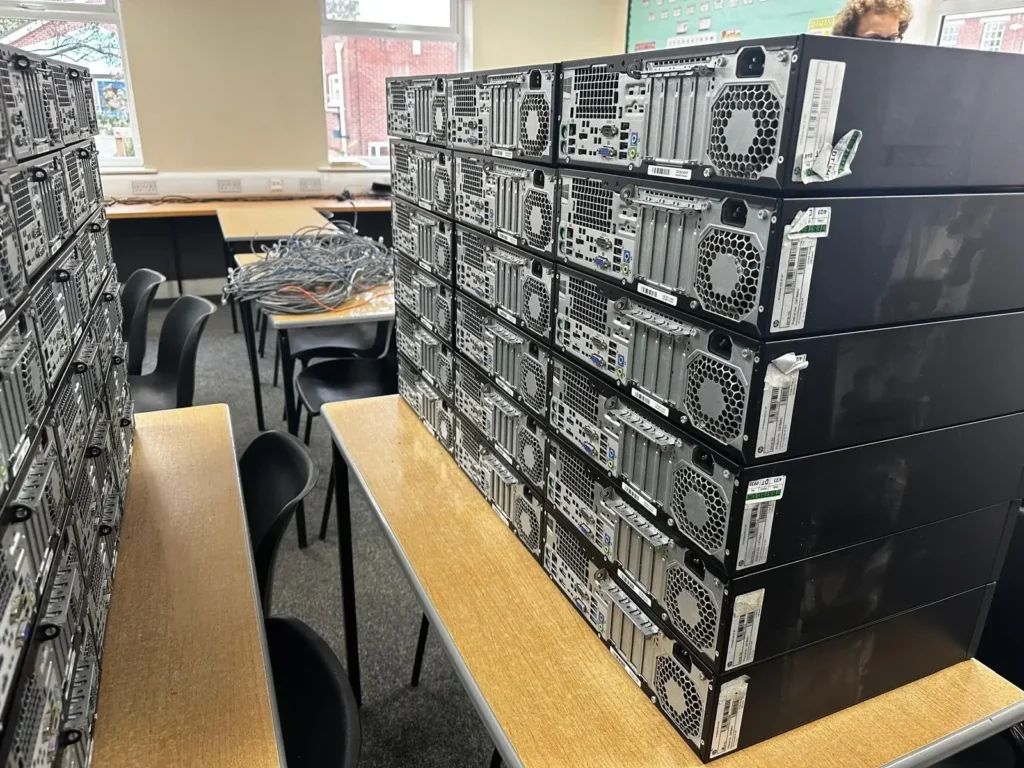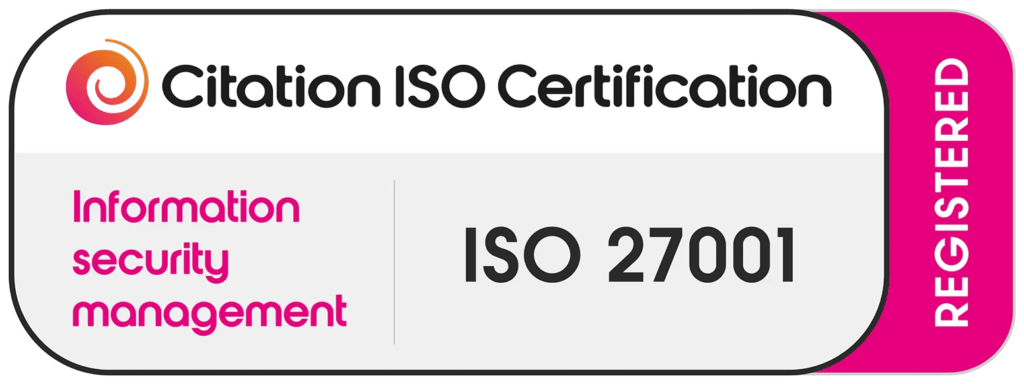Introduction to the Importance of IT Recycling in Achieving Sustainability
The rapid advancement of technology has led Eco-Friendly IT Recycling to a significant increase in electronic waste (e-waste). Businesses and individuals frequently upgrade their IT equipment, leaving old devices unused and improperly discarded. Eco-friendly IT recycling is a sustainable solution that ensures old gadgets are disposed of responsibly while minimizing environmental impact. Proper, sustainable IT disposal helps conserve natural resources, reduce pollution, and secure data from unauthorized access.
This article explores the importance of green IT waste management, the best e-waste recycling solutions, and how corporate IT recycling programs can contribute to a greener future.
Understanding IT Recycling
What is IT Recycling?
IT recycling refers to the responsible disposal, refurbishment, or reuse of old electronic devices such as laptops, computers, servers, and networking equipment. It ensures that hazardous materials are handled correctly while valuable components are recovered for future use.
How IT Recycling Contributes to Environmental Sustainability
- Reduces landfill waste and prevents soil and water contamination.
- Conserves resources by extracting valuable metals like gold, silver, and copper.
- Lowers greenhouse gas emissions by decreasing the demand for new electronic production.
The Growing E-Waste Problem
Shocking Statistics on Global E-Waste
- Over 50 million metric tons of e-waste are generated annually.
- Only 20% of global e-waste is formally recycled, leaving most electronics to be dumped in landfills.
- By 2030, e-waste production is expected to double, making responsible IT asset disposal more critical than ever.
How E-Waste Harms the Environment
- Toxic chemicals like lead, mercury, and cadmium leak into the soil and water.
- Burning e-waste releases harmful greenhouse gases, contributing to climate change.
- Unregulated disposal methods endanger human health, especially in developing countries where e-waste is dumped.
Why Eco-Friendly IT Recycling Matters
Reducing Carbon Footprint
Recycling electronics reduces the need for new production, which significantly cuts down energy consumption and carbon emissions.
Conserving Natural Resources
Mining raw materials for electronics depletes natural resources. Certified e-waste disposal helps recover precious metals, reducing the environmental impact.
Preventing Data Breaches with Secure IT Disposal
Many discarded IT devices still contain sensitive data. Secure data destruction in IT recycling ensures that personal and business information is permanently erased before recycling.
How Businesses Can Implement Sustainable IT Recycling
Conducting IT Asset Audits
Businesses should assess their IT inventory regularly to identify outdated equipment for responsible recycling.
Partnering with Certified IT Recycling Services
Working with best IT recycling companies near me ensures safe and certified e-waste disposal. Look for recyclers with R2 or e-Stewards certifications for compliance with environmental laws.
Encouraging a Company-Wide IT Recycling Policy
Educate employees on eco-friendly ways to get rid of old computers and provide designated e-waste bins for easy disposal.
Best Practices for IT Recycling at Home
Proper Disposal of Old Gadgets
Avoid throwing old electronics in regular trash. Instead, take them to certified e-waste recyclers or electronics retailers offering take-back programs.
Donating vs. Recycling: Which is Better?
If a device is still functional, donating it to charities or schools extends its lifespan and benefits those in need.
DIY Recycling Tips
- Remove and recycle batteries separately.
- Wipe data securely before disposal.
- Repurpose old devices for secondary uses, such as turning an old laptop into a media server.
The Role of Manufacturers in Eco-Friendly IT Recycling
Designing for Recycling: The Concept of Circular Economy
Tech companies are adopting circular economy models, where products are designed for easy disassembly and recycling.
Take-Back Programs and Incentives from Tech Companies
Brands like Apple, Dell, and HP offer trade-in and recycling programs, giving consumers incentives to return old electronics responsibly.
How Governments Are Addressing IT Waste
Global E-Waste Regulations and Policies
Many countries have introduced strict e-waste laws requiring proper tech industry sustainability practices. Regulations like the EU WEEE Directive and U.S. EPA guidelines enforce responsible e-waste management.
The Right to Repair Movement and Its Impact
The Right to Repair movement promotes consumer rights to repair and upgrade their devices instead of replacing them, reducing unnecessary e-waste.
Benefits of Sustainable IT Recycling
Environmental Benefits
- Reduces toxic waste in landfills.
- Lowers energy consumption.
- Promotes sustainability in the tech industry.
Economic and Social Benefits
- Creates green jobs in the recycling sector.
- Provides affordable refurbished electronics for low-income communities.
Future-Proofing Against E-Waste Laws
Complying with corporate IT recycling programs ensures businesses meet legal requirements, avoiding fines and reputational damage.
Top Certified IT Recycling Companies
Features of a Reliable IT Recycler
- Holds certifications like R2, e-Stewards, or ISO 14001.
- Offers secure data destruction in IT recycling.
- Provides proper documentation for compliance.
How to Choose the Right IT Recycling Partner
Look for recyclers with transparent policies, customer reviews, and partnerships with major tech brands.
The Future of IT Recycling and Sustainability
Emerging Technologies in E-Waste Management
AI and robotics are being used to improve e-waste sorting and material recovery processes.
How AI and Automation Are Improving IT Recycling
Automated recycling systems increase efficiency and reduce human exposure to hazardous materials.
How Individuals Can Contribute to Greener IT Practices
Repair Instead of Replace
Opting for repairs extends a device’s lifespan and prevents unnecessary e-waste.
Opting for Refurbished Electronics
Buying refurbished laptops and computers is an eco-friendly IT recycling practice that reduces demand for new products.
Common Myths About IT Recycling
Is IT Recycling Expensive?
While some services charge a fee, many recyclers offer free IT disposal or even pay for valuable components.
Does IT Recycling Really Help the Environment?
Yes! Responsible IT asset disposal prevents pollution and reduces resource depletion.
Conclusion
Proper eco-friendly IT recycling is essential for reducing e-waste, protecting the environment, and securing sensitive data. By adopting green IT waste management practices, businesses and individuals can contribute to a sustainable future. Start recycling today and be part of the solution!
Frequently Asked Questions (FAQs)
What items can be recycled in IT recycling?
Laptops, desktops, keyboards, monitors, cables, printers, and networking equipment can be recycled.
Is IT recycling secure for data protection?
Yes, when done by certified e-waste disposal providers using secure data destruction methods.
How can I find a certified IT recycler near me?
Search for best IT recycling companies near me or check retailer take-back programs.
Can businesses earn money through IT recycling?
Yes! Companies can sell old IT assets to recyclers who refurbish and resell them.
What is the difference between IT recycling and e-waste disposal?
IT recycling focuses on material recovery, while e-waste disposal may involve destruction without recycling.



